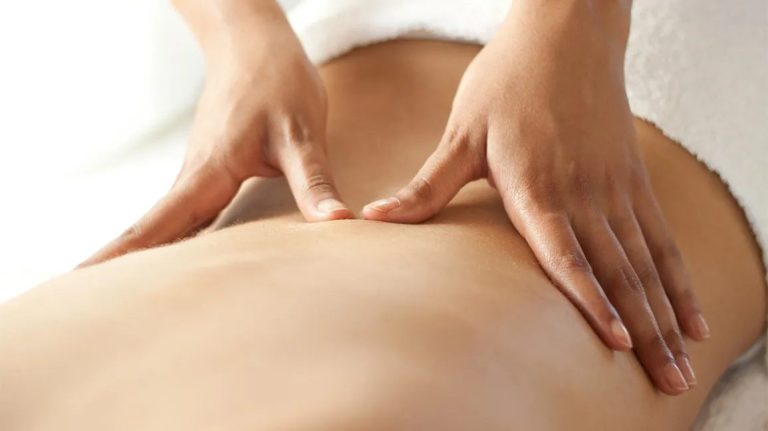Last Updated on June 8, 2024 by Asfa Rasheed
Massage is a popular and effective treatment for back pain, among other ailments. It involves manipulating the body’s soft tissues — including muscles, connective tissue, tendons, ligaments, and joints — to alleviate pain, stress, muscle tension, and to promote overall well-being.
Types of Massage for Back Pain:
Swedish Massage: This is the most common type of massage. It uses a combination of long gliding strokes, kneading, tapping, friction, and gentle stretching to alleviate muscle tension.
Deep Tissue Massage: Focuses on the deeper layers of muscle tissue. It aims to release chronic patterns of tension in the body through slow strokes and deep finger pressure.
Trigger Point Therapy: Targets specific points in the muscle that produce pain in other parts of the body. By focusing on these points, the therapist can release tension and alleviate pain.
Shiatsu: A Japanese form of bodywork that uses localized finger pressure in a rhythmic sequence on acupuncture meridians.
Myofascial Release: Focuses on releasing tension in the fascia, which is the connective tissue surrounding muscles.
Sports Massage: Geared toward athletes and focuses on areas of the body that are overused from repetitive movements.
Benefits of Massage for Back Pain:
Muscle Relaxation: Helps relieve muscle tension and stiffness in the back.
Increased Blood Flow: Improves circulation, which helps deliver oxygen and nutrients to the muscles and aids in healing.
Release of Endorphins: These are the body’s natural painkillers and can help reduce pain perception.
Improved Mobility and Flexibility: Regular massages can help increase joint flexibility and reduce stiffness.
Stress Reduction: Massage can reduce levels of the stress hormone cortisol, promoting relaxation.
Precautions and Contraindications:
Severity of Pain: If the pain is severe or sudden, it’s crucial to see a doctor before getting a massage to rule out conditions that need medical attention.
Recent Injury: If you’ve recently been injured, you should wait until the injury has started to heal before getting a massage.
Skin Conditions: Open wounds, burns, or active skin infections should be avoided during a massage.
Osteoporosis: People with osteoporosis should get a gentle massage to avoid fracturing brittle bones.
Blood Clots: Those with a history of blood clots should be cautious, as there’s a risk of dislodging the clots.
Cancer: Individuals with cancer or a history of cancer should consult their doctor, especially if the cancer has spread to bones.
Tips for a Successful Massage Experience:
Find a Qualified Therapist: Ensure your massage therapist is trained and licensed.
Communicate: Let your therapist know about your pain points and any areas to avoid.
Relax: Try to be as relaxed as possible to get the most benefit from your massage.
Hydrate: Drinking water after a massage can help flush out toxins that are released from muscles.
Listen to Your Body: If anything feels too painful or uncomfortable during the massage, let your therapist know.
Conclusion: Massage can be an effective way to manage back pain when done correctly. However, it’s essential to find a qualified therapist and communicate your needs and concerns. Also, remember that while massage can be a beneficial component of back pain management, it might not address the root cause of the pain. It’s essential to work with a healthcare professional to develop a comprehensive approach to treating your back pain.

